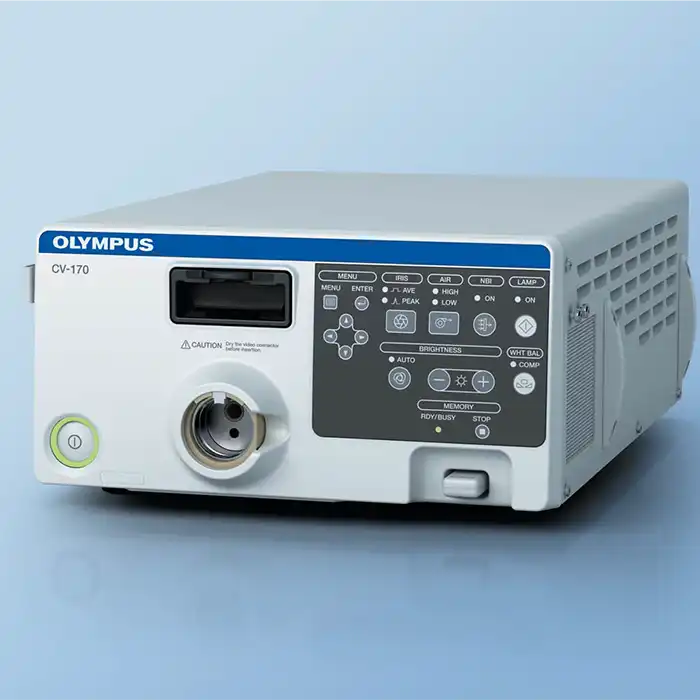Olympus CV-170 Video System Center
Combination of HDTV and NBI is now available with an LED light source in one design
Phone:+86-21-54286005
Resources
 CV-170_Brochure_EN
CV-170_Brochure_EN

 Microsystem
Microsystem
 Endoscopysystem
Endoscopysystem
 Energysystem
Energysystem
 +86-21-54286005
+86-21-54286005
 info@tenmed.net
info@tenmed.net
 Room 602, Building 1, No. 111 Luxiang Road (Greenland Park Plaza), Baoshan District, Shanghai, China
Room 602, Building 1, No. 111 Luxiang Road (Greenland Park Plaza), Baoshan District, Shanghai, China

Combination of HDTV and NBI is now available with an LED light source in one design
Phone:+86-21-54286005
 CV-170_Brochure_EN
CV-170_Brochure_EN
Combination of HDTV and NBI is now available with an LED light source in one design

Main Features
HDTV imaging capability provides the best possible image quality for endoscopes, enabling observation of capillaries, mucosal structures, and other patterns.
NBI (Narrow Band Imaging) enhances the visibility of capillaries and other structures on the mucosal surface.
Newly adopted long-life LED light source minimizes lamp replacement, while reducing energy and noise.
The pre-freeze function selects the clearest still image automatically. It may help to save time and eliminate the physician’s frustration.
Two types of structure enhancement are available – mainly, the conventional Type A is ideal for observation of larger mucosal tissues with high contrast in the lower gastrointestinal tract, while the new Type B is suitable for observation of vascular tissues in the upper gastrointestinal tract.
Portable memory (MAJ-1925) is compatible, which is the standard for data management. Simply connect and upload.
Compatible with EVIS 100/130/140 Series, Actera 150 Series, EVIS EXERA 160 Series, EVIS EXERA II 180 Series and GI/BF/VISERA Series scopes.
*Please note that there are some exceptions.
16:9 and 16:10 output for a HDTV monitor is available.Compatible with analog, HD-SDI, and DVI output.

